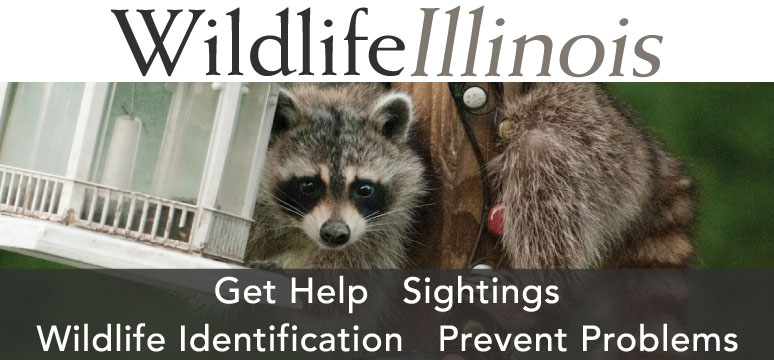
A leopard frog. Photo by Leslie Gittemeier.



A leopard frog. Photo by Leslie Gittemeier.
As dusk settles over a wetland and the day’s final birdsong fades, a new chorus rises: the peeps, croaks, trills, and bellows of frogs and toads. To the untrained ear, it may sound like a joyful racket. But to community scientists across the St. Louis region, it’s critical data—part of a growing effort to monitor the health of amphibian populations and the wetlands they call home.

FrogWatch USA™ is a nationwide community science program that empowers everyday people to make meaningful contributions to amphibian conservation. Launched in 1998 by the United States Geological Survey (USGS), FrogWatch is now managed by the Akron Zoo and currently operates in 38 states plus Washington, D.C.—with more than 130 active chapters. There’s even a FrogWatch Canada.
Volunteers across the country listen and document the calls of frogs and toads in their area. These observations help scientists monitor species diversity, track the potential arrival of rare or invasive species, and detect long-term changes in habitat quality, range and breeding timing.
The FrogWatch Gateway Chapter, serving the greater St. Louis metropolitan area, was founded in 2011 as FrogWatch STL by Mike Dawson at St. Louis Zoo. This year marks a major turning point for the chapter, with a full-scale revamp under way to better reflect its growing community and impact. With help from talented computer science students at Southern Illinois University Edwardsville (SIUE), the chapter is developing a new custom app to support volunteers in the field, while also revamping the website to improve user experience and access to resources.
Alongside these digital upgrades, the chapter is undergoing a rebranding effort—including a new name and logo—to better represent the entire metropolitan St. Louis area, not just the city proper. These updates aim to strengthen recognition and reflect the wide geographic reach of its volunteers and partners.

The chapter’s core training sites include:
The team is also exploring new ways to engage classrooms and support educators, as well as how to better assist researchers by aligning volunteer efforts with active scientific questions about amphibian populations and wetland ecosystems.
Frogs and toads may be small, but their plight tells a much bigger story. Globally, amphibians are in crisis. The International Union for Conservation of Nature (IUCN) estimates that 40 percent of amphibian species are threatened with extinction. The reasons are numerous—habitat loss, climate change, disease, invasive species and pollution—but all point back to human impact.
In Illinois alone, nearly 90 percent of the state’s original wetlands have been lost. And of the species federally listed as endangered in the U.S., around 45 percent depend on wetland habitats.
Frogs are particularly sensitive because of their semi-permeable skin, which allows them to breathe through their bodies but also leaves them vulnerable to absorbing toxins. Their life cycle requires both aquatic and terrestrial environments, making them strong indicators of environmental health.

At its simplest, a wetland is exactly what it sounds like—land covered by water either seasonally or permanently. But wetlands are also among the most vital ecosystems on the planet. They serve as:
Because frogs rely so heavily on these habitats, any decline in wetland health is often reflected quickly in their populations.
In 2024, the National Great Rivers Research and Education Center (NGRREC) became a co-managing partner of the FrogWatch Gateway Chapter, joining forces with the Saint Louis Zoo to help grow and support the program across the metropolitan region. NGRREC’s involvement developed naturally through its strong connection to wetlands research and community engagement.
Over the past several years, NGRREC scientists have been leading research on the bird-voiced treefrog, a state-threatened species found in the cypress-tupelo swamps of southern Illinois. When presenting this work to the public, the most common question became: “How can I help?” In response, NGRREC began directing community members toward FrogWatch—a meaningful way for people to contribute data on frogs and toads in their own neighborhoods and local wetlands. This public participation complements scientific research efforts by supporting long-term monitoring and fostering greater awareness of the challenges facing amphibians and their habitats.
Participating in FrogWatch doesn’t require a biology degree or specialized training, just curiosity, commitment and a willingness to listen. Volunteers choose a local wetland site to monitor, attend a training session and submit their observations throughout the frog-calling season. These observations contribute to national datasets that help scientists and land managers make informed conservation decisions.
Whether you’re interested in science, conservation, or just want to spend more time outdoors, FrogWatch offers a way to make a difference for wetlands, wildlife and future generations. With new tools and expanded outreach in development, there’s never been a better time to join the chorus.
Learn more about the FrogWatch Gateway Chapter and upcoming trainings and volunteer opportunities.
Learn more about FrogWatch Chapters near you.
Learn more about the work NGRREC is doing.
Jessica Mohlman is the Director of Environmental Education and a Wildlife Ecologist at the National Great Rivers Research and Education Center (NGRREC), where she leads educational programming, community science initiatives and public engagement projects that connect people to river ecosystems. With a passion for mentoring students and making science accessible, she is dedicated to bridging the gap between research and public understanding. Originally from northern Illinois, she earned her B.S. from Northland College in Ashland, Wisconsin and her M.S. from the University of Georgia in Athens.
Submit a question for the author